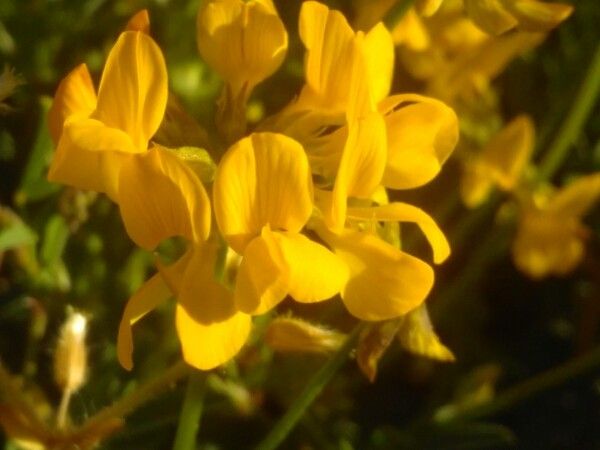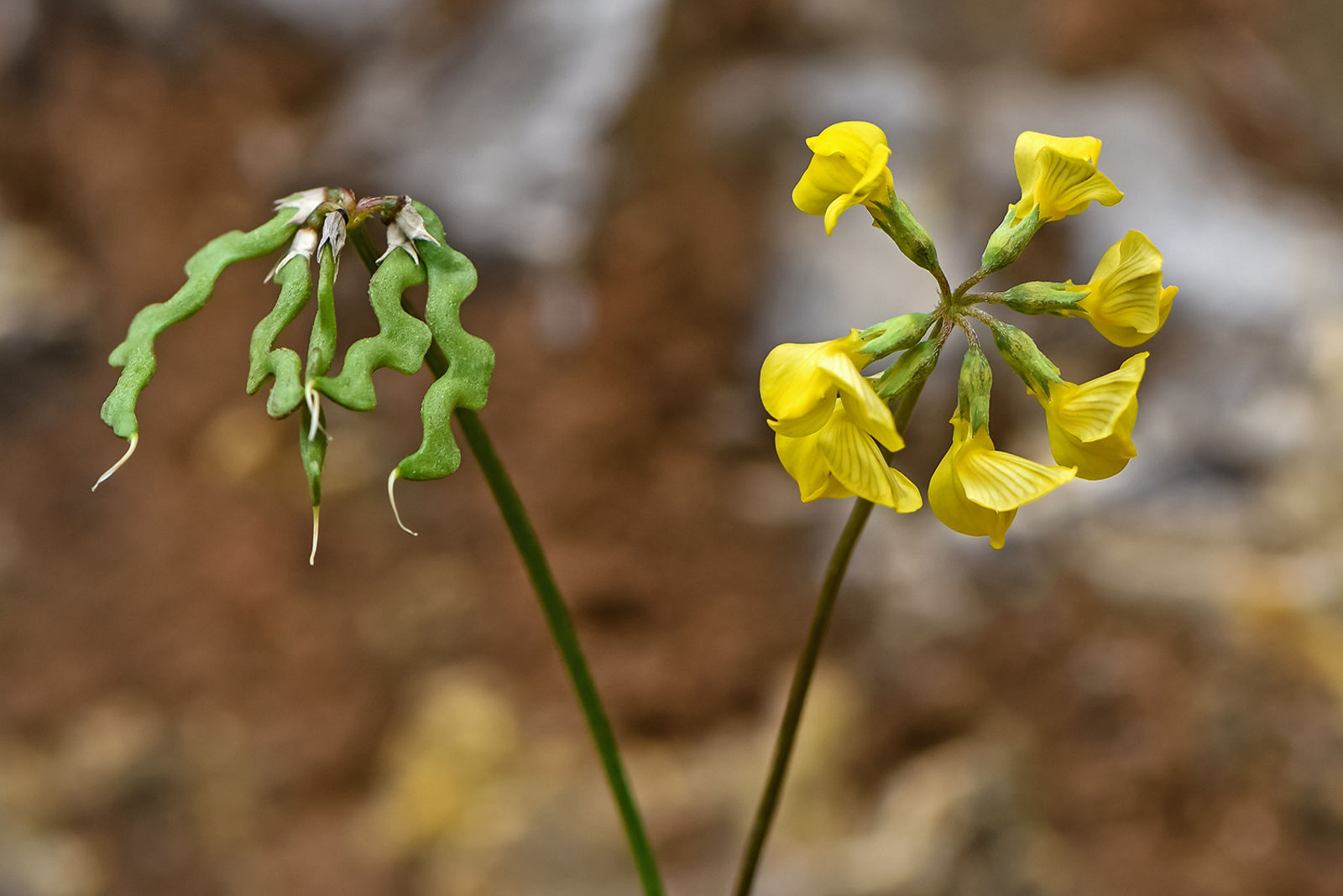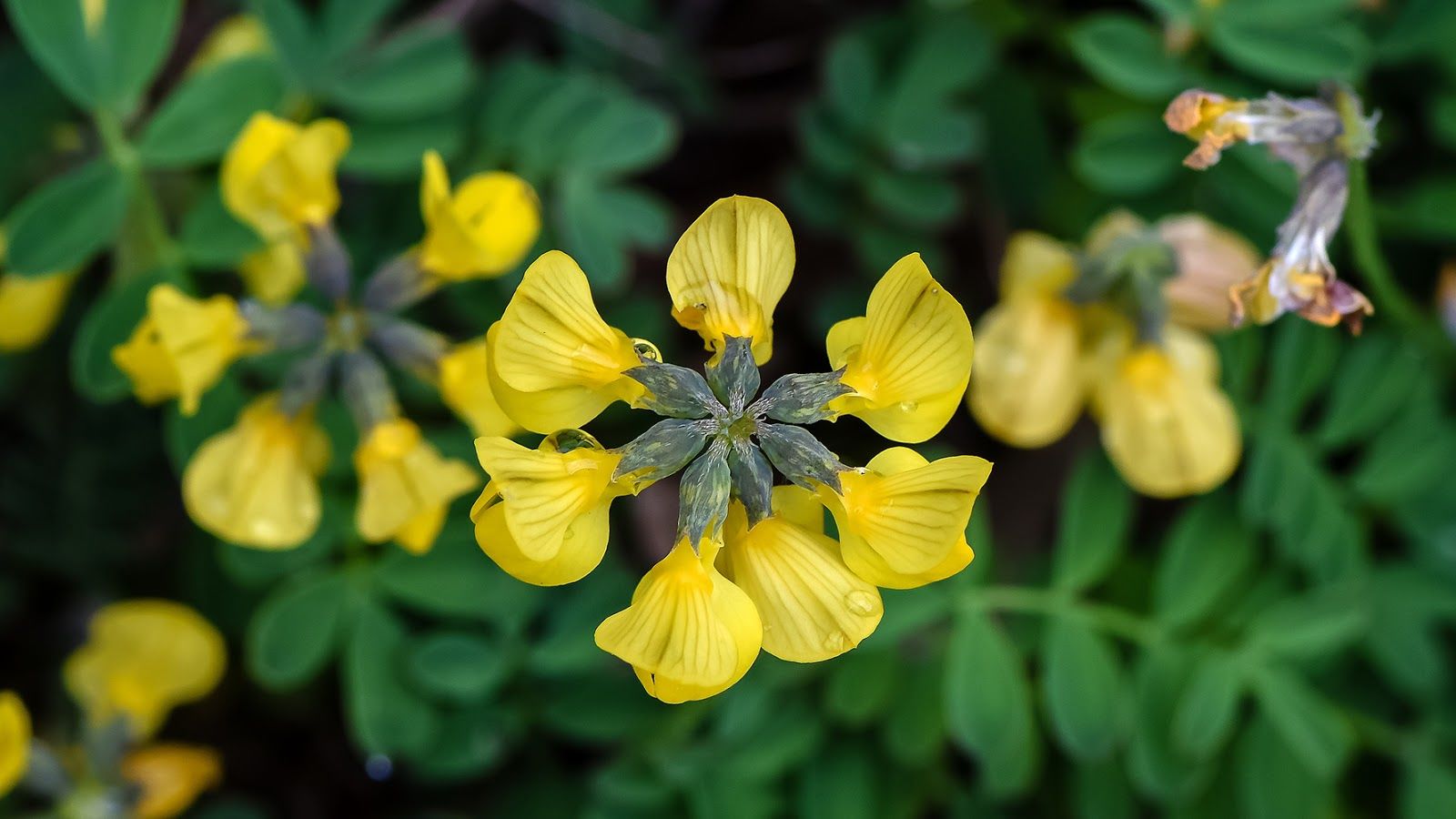Furrowed Milkvetch
hippocrepis comosa
Also known as: ["Horsehoe Vetch","Furrowed Scorpion Grass"]
Overview
A low-growing perennial legume with distinctive horseshoe-shaped seed pods and yellow flowers.
Benefits & Perks
["wildlife attractant (bees, butterflies, birds)","drought tolerant","low maintenance"]
Botanical Classification
| Phylum: | Magnoliophyta |
| Class: | Magnoliopsida |
| Order: | Fabales |
| Family: | Fabaceae |
| Genus: | Hippocrepis |
| Botanical Name: | Hippocrepis comosa |
Plant Characteristics
Basic Information
- Category: Flowers
- Suitable Location: rock gardens, meadows, or sunny borders
- Suitable For:
- Is Weed: No
- Allergenicity: low
Environmental Needs
- Climate: {"temperatureRange":"5–30°C"}
- Hardiness: {"zones":"5–8"}
- Misting: rarely required, only if ambient humidity is very low
- Drainage: Fast-draining to prevent waterlogging.
- Soil Type: Well-draining, loamy soil with added organic matter. A mix of standard potting soil, perlite, and a small amount of compost works well.
Maintenance Level
- Maintenance Level: low
- Toughness Level: moderate
- Pruning Frequency: Light pruning can be done as needed throughout the growing season. Major pruning is best done in early spring before new growth begins.
- Pruning Intensity: Light to moderate. Avoid heavy pruning unless necessary to control size or shape.
Care Details
Ideal Sunlight Coverage:
Bright indirect light for 6–8 hours daily. Can tolerate some direct morning sun but avoid harsh afternoon sun, especially in summer.
Sunlight Tolerance Tips:
Acclimate plants gradually to direct sunlight to prevent scorching. Place in a spot with filtered light or dappled shade during peak sun hours. For indoor plants, rotate regularly to ensure even light exposure.
Care Requirements
Care Difficulty
easymoderate
Sunlight
full sun to partial shade
Avoid intense afternoon sun; provide bright indirect light; rotate plant for even growth.
Watering
every 7–10 days during active growth, reduce in winter
Water deeply but infrequently to encourage deep root growth; ensure proper drainage to avoid waterlogging; adjust frequency based on season and weather.
Soil
well-drained, sandy loam with moderate organic content
pH: Slightly acidic to neutral, pH 6.0–7.0.
Ensure good drainage to prevent root rot; use a mix with organic matter for fertility; check pH periodically.
Temperature
Prefers cool to moderate temperatures, ideally 60–75°F (15–24°C). Can tolerate cooler temperatures down to 50°F (10°C) but avoid prolonged exposure to frost.
Protect from frost; provide shade in summer; maintain moderate temperatures for optimal growth.
Fertilizing
every 4–6 weeks during spring and summer
Dilute fertilizer to prevent root burn; fertilize during active growth only; avoid over-fertilization.
Propagation
Methods
Stem cuttings or division. Stem cuttings are the most common method for home growers.
Step-by-Step Propagation Guide
- Take a 4–6 inch cutting with several nodes.
- Remove lower leaves.
- Dip in rooting hormone (optional).
- Plant in moist propagation medium.
- Keep warm and humid.
Best Time: Spring or early summer when the plant is actively growing.
Environment
Warm, humid environment with indirect light. Maintain temperatures around 70°F (21°C) and high humidity.
Medium
Well-draining potting mix, such as a mix of peat, perlite, and sand.
Hormone
Rooting hormone is optional but can improve success rates.
Timeline
Roots typically develop in 3–6 weeks. New growth may appear in 2–3 months.
Tools Needed
Pruning shears, rooting hormone (optional), small pots, well-draining soil mix, plastic bags or propagator for humidity.
Quick Tips
Use sharp, clean tools to prevent disease; maintain high humidity for faster rooting; avoid direct sunlight during rooting.
Pruning & Repotting
Pruning Guide
Method
Use clean, sharp tools to make clean cuts just above a leaf node or bud. Remove dead, damaged, or crossing stems first.
Pruning Plan
Prune to maintain shape, encourage bushier growth, and remove dead or diseased stems. Pruning also helps improve air circulation and reduce pest issues.
Tools
Pruning shears, sterilizing solution (e.g., rubbing alcohol), gloves.
Checklist
Sterilize tools; prune dead or damaged stems; shape plant as desired; clean up debris after pruning.
Repotting Guide
Best Season
Early spring, just before the active growing season begins.
Pot Size
Choose a pot one size larger than the current one, with a diameter about 2–3 inches wider.
Method
Gently remove the plant from its pot, loosen the roots, and trim any damaged or circling roots. Place in a new pot with fresh, well-draining soil, ensuring proper drainage.
Suggestions
Repot every 2–3 years or when the plant becomes root-bound. Repotting refreshes the soil and provides more space for growth.
Checklist
Choose appropriate pot size; prepare fresh soil mix; gently remove plant; trim roots if needed; repot and water lightly.
Advanced Care Tips
Watering Mastery
Watering Checklist
Check soil moisture before watering; water deeply at the base; ensure drainage; adjust for season.
How to Apply Water Properly
Water at the base of the plant, targeting the root zone. Apply water slowly and deeply to ensure thorough saturation without runoff. Allow excess water to drain away completely. Water in the morning to minimize evaporation and reduce fungal risk.
Watering Schedule Tips
Water moderately during active growth in spring and summer, allowing soil to dry slightly between waterings. Reduce watering in fall and winter to prevent root rot.
Soil Improvement
Add perlite or coarse sand to improve drainage; incorporate compost or well-rotted manure to enhance fertility and structure.
Temperature Stress Management
Signs of Temperature Issues
Chlorosis (yellowing leaves), wilting, stunted growth, or bud drop in response to extreme heat or cold.
Cold Stress
Low temperatures can slow growth and cause leaf drop. Prolonged exposure to frost can damage or kill the plant.
Solution: Protect from frost with a frost cloth or move to a sheltered location. Ensure good air circulation to prevent cold-induced fungal issues.
Hot Stress
Excessive heat can lead to wilting, leaf scorch, and reduced flowering. High humidity combined with heat may cause fungal diseases.
Solution: Provide shade during peak heat, increase humidity with misting, and ensure adequate watering to combat heat stress.
Fertilizing Guide
Fertilizing Checklist
Use balanced fertilizer; dilute properly; fertilize during growing season; avoid winter feeding.
Fertilizing Method
Use a balanced, water-soluble fertilizer diluted to half strength. Apply every 4–6 weeks during the growing season (spring and summer). Avoid fertilizing in fall and winter.
Common Problems & Solutions
Toxicity Warning
Cats
Non-toxicHippocrepis comosa is not considered toxic to cats. It has no known adverse physiological effects when ingested.
🌿 Toxic Parts:
⚡ Toxic If:
if eaten
Dogs
Non-toxicHippocrepis comosa is not considered toxic to dogs. It has no known adverse physiological effects when ingested.
🌿 Toxic Parts:
⚡ Toxic If:
if eaten
Humans
Non-toxicHippocrepis comosa is not considered toxic to humans. It has no known adverse physiological effects when ingested.
🌿 Toxic Parts:
⚡ Toxic If:
if eaten
Frequently Asked Questions
Q: Does Hippocrepis comosa attract wildlife?
A: Yes, it is a valuable plant for attracting bees and butterflies.
Q: Is this plant drought-tolerant?
A: Yes, it is well-adapted to dry conditions.
Q: What are the distinctive features of this plant?
A: It has yellow flowers and uniquely shaped seed pods resembling horseshoes.
Quick Reference
| Family: | Fabaceae |
| Care: | easy |
| Light: | full sun to partial shade |
| Water: | every 7–10 days during activ |
Get Expert Care Tips
Download the Plantious app for personalized care reminders and plant identification!
Google Play App Store








